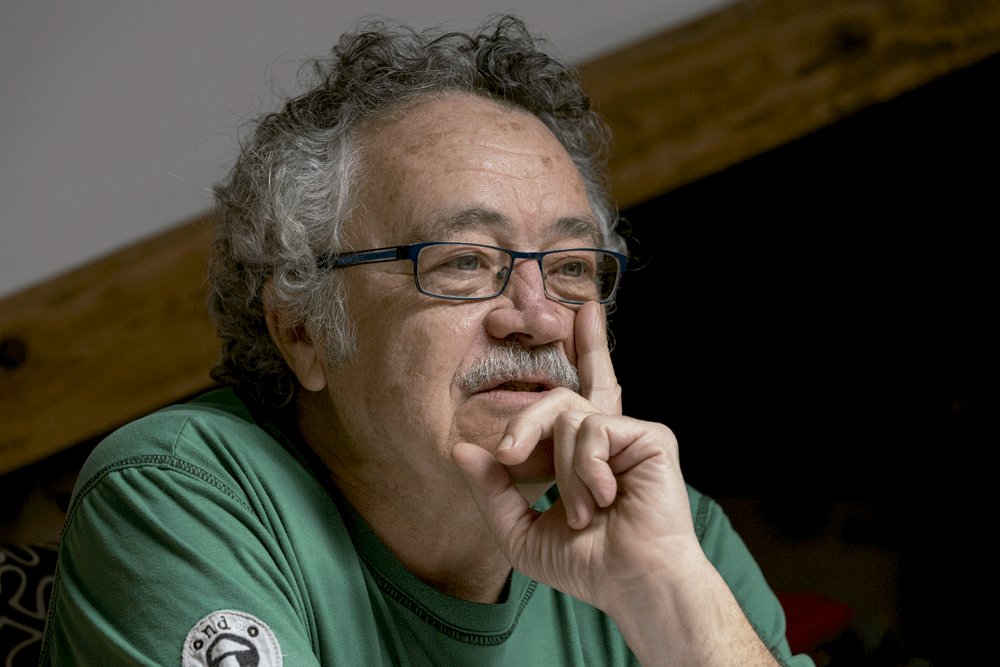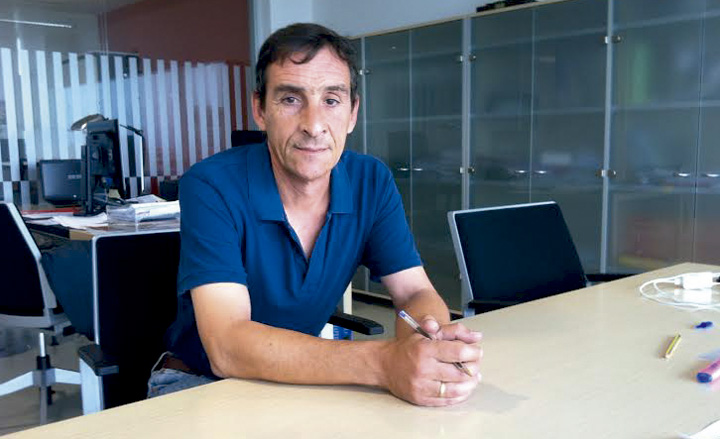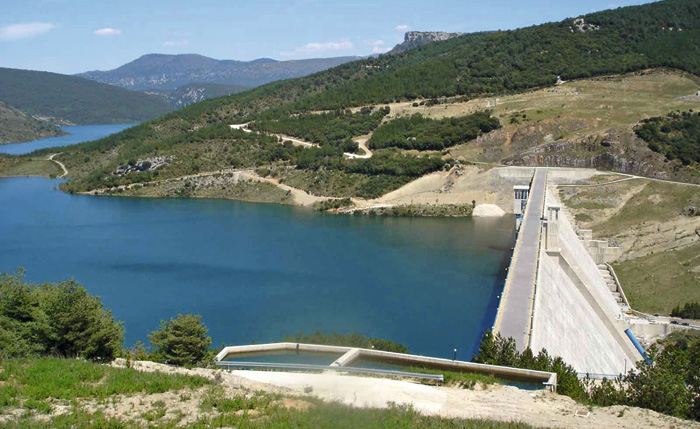The Ega branch of the first phase of the Canal of Navarra reaches Sesma
- The water from the Canal de Navarra has arrived in Sesma this week and will allow to water 1,290 hectares of land. On Thursday, President María Chivite and counselor Bernardo Ciriza opened the arrival of the infrastructure. Infrastructure costs have been EUR 7.8 million.

The waters of the Itoiz Reservoir reach the cultivation plots of Sesma after over a year and a half of works. During this time a irrigation network has been built with a 2.7 km pipeline. Irrigation is the main objective of the infrastructure, but it will also bring drinking water to the region. 1,290 new hectares may be irrigated and 350 farmers may use water, provided that a piping system is built on their land, to be carried out by each producer.
Until now, the dry crops have been the main in these lands, occupying mainly olive trees, asparagus, nogales, almond trees and vineyards. From now on the water from the Itoiz reservoir will allow the planting of other products such as maize, vegetables, sunflower, tomato and fruit.
It is commented that the irrigation system allows 50 new products, but from what has been seen so far, mainly livestock forage plantations are channeled, among which transgenic maize stands out. Another criticism of this irrigation system is the tendency to concentrate land in the hands of fewer owners.
.jpg)
Ramal de Ega
This infrastructure is part of the extension of the first phase of the Canal de Navarra. The first phase runs between the Itoiz and Pitillas reservoir and ended in 2011. It is a classic outdoor channel. Given the lack of money for the construction of the second tranche, the UPN Government proposed in 2012 the extension of the first tranche based on pipelines.
This consists of two sections, one built in parallel to the Arga River and the works ended in 2021. The second section is the ramal of the Ega River, which now reaches Sesma, which is 26.2 kilometers and runs through Lerín, Sesma, Carcar, Lodosa, Andosilla, San Adrián and Azagra in parallel to Ega.
Second historical part
The Second Section of the Canal has been waiting for a long time, its objective is to bring the water to the south of Navarra and the Government of Navarra announced that last year the works would be tendered by the end of 2023. President Chivite says that this second phase will create 3,500 jobs in Navarre. At first it had to be open air, but in 2017 the Foral Government decided it would be done by two 7.1 kilometer pipes. This second section is intended to water 21,522 hectares. Construction is planned for 48 months and has a budget of EUR 249.7 million.
The infrastructure of the Canal de Navarra is wide and old and is closely linked to the controversy of the Itoiz Reservoir. The latter started in 1993 and ended in 2004. It was then that the first phase of the Canal de Navarra began to be built, and the Government of Navarra announced that the second phase will begin next year.
Ez da egingo Nafarroako ubidearen Bigarren Zatia (71 km, Pitillas-Ablitas), ez behintzat hasierako proiektuak aurreikusten zuen gisan, aire librean, Ebro eta Aragoi ibaik gainditzeko sifoi erraldoiak eginez eta ezaugarri konplexu haiekin.
1996ko apirilaren 6an Itoitzekin Elkartasuna taldeko zortzi kidek urtegiko obren kableak moztu eta presaren eraikuntza hainbat hilabetez gerarazi zuten. 20 urteren ondoren zero gunera itzuli gara.
Leringo herritarrek, lurren jabe diren heinean, Nafarroako Ubideko ura baliatzeari uko egin eta ureztatze sistema tradizionalarekin jarraitzea erabaki dute galdeketa lotesle bidez. Bozka eman duen herritarren %61 agertu dira aldaketaren kontra, "uraren pribatizazioa"... [+]
Nafarroako ubidearen bidez hegoaldeko lur ureztatuak gehitu nahi zituen Yolanda Barcina buru duen gobernuak. Ez dira ordea helburua lortzen ari, eta horren ordez atzo Mendinuetan 1.125 biztanlerengana edateko ura eramateko hartunea inauguratu zuten, Gara egunkariak ekarri... [+]


















